
Diaspore Gemstone: Nneɛma, Nkyerɛase, Botae & Nea Ɛkeka Ho
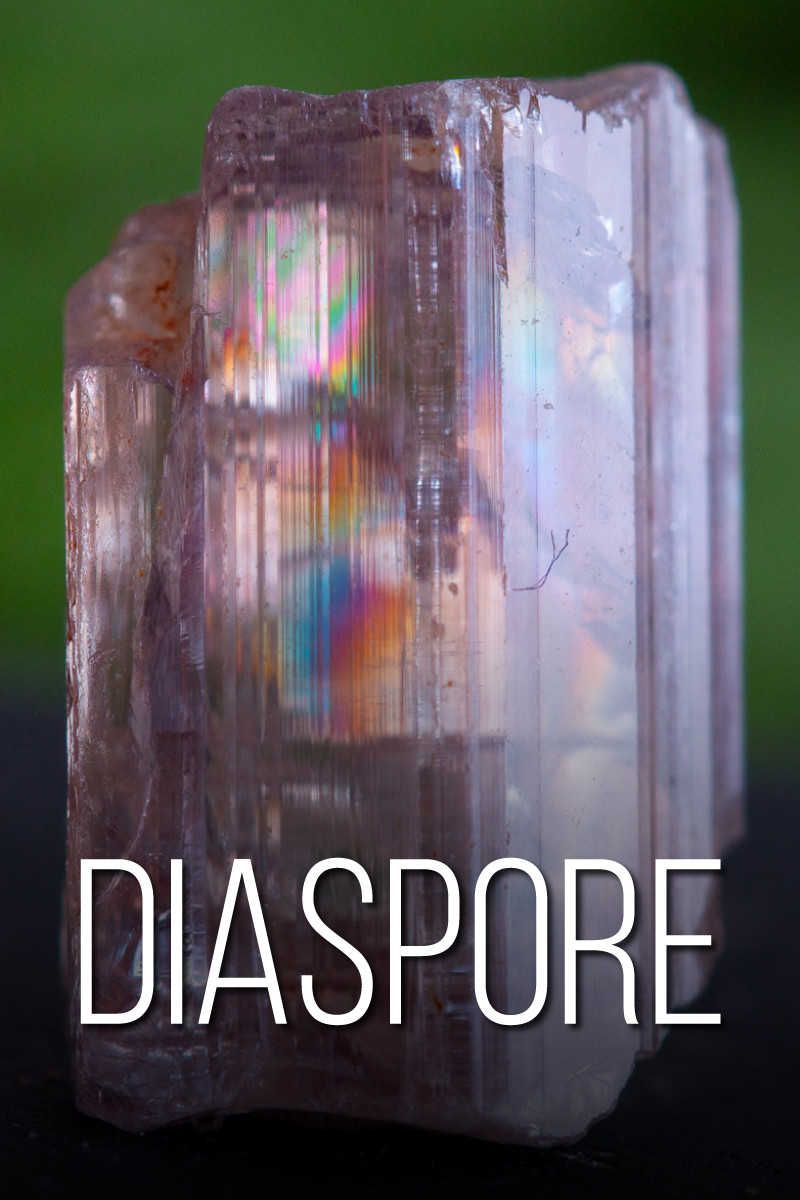 Diaspore yɛ aluminium hydroxide aboɔden abo a emu da hɔ a wɔagye din wɔ Turkeyfo aboɔden a ɛntaa nsi na ɛsakra kɔla ho. Kɔla bɛn na diaspore yɛ? Abo a ɛwɔ kɔla biako dodow no ara nni kɔla, pink, bruu, anaa kɔkɔɔ.
Diaspore yɛ aluminium hydroxide aboɔden abo a emu da hɔ a wɔagye din wɔ Turkeyfo aboɔden a ɛntaa nsi na ɛsakra kɔla ho. Kɔla bɛn na diaspore yɛ? Abo a ɛwɔ kɔla biako dodow no ara nni kɔla, pink, bruu, anaa kɔkɔɔ.
Diaspore mineral no dɔɔso, nanso diaspore a ɛte sɛ aboɔden abo no ho yɛ na. Aboɔden abo a ɛsakra kɔla dodow no ara yɛ Turkeyfo a wɔatu akɔtra mmeae foforo, nanso dɛn ne Turkeyfo a wɔatu akɔtra mmeae foforo?
Turkey diaspore ne diaspore aboɔden abo a ɛkorɔn sen biara a ɛwɔ gua so. Turkey diaspore ho aguadi din — Zultanite®, Ottomanite, ne Csarite® — yɛ nneɛma a efi İlbir Mmepɔw no anafo fam atɔe nkutoo.
W’ani gye ho? Yɛbɛhyɛ wo ma wɔ nsɛm a ɛwɔ diaspore agyapadeɛ, ahodoɔ, ayaresa tumi, ne nea ɛkeka ho akyi nyinaa!

Dɛn Ne Diaspore Abo?
Diaspore yɛ nnɛyi aboɔden abo a ɛsom bo fã bi . Ná tetefo nim, nanso diaspore a ɛyɛ aboɔden abo yɛ ade a wɔahu wɔ afeha a ɛto so 20 mu. Edin afoforo a wɔde frɛ ɔbo no bi ne empholite, kayserite, ne tanatarite.
Saa ahwehwɛ yi yɛ nsoromma mu hwɛ bo ma Leo, Libra, ne Pisces. Nsɛnkyerɛnne abiɛsa no nyinaa wɔ ahokokwaw bi a ɛma wɔtra ase mprempren na wɔmfa wɔn ho nyɛ aniberesɛm dodo, na ɛne diaspore sɛnkyerɛnne kwan so ahotoso ne adebɔ hyia.
Zultanite® a ɛsakra kɔla yɛ ade a ne bo yɛ den kakra a wɔde besi alexandrite , June awobo no ananmu. Bere a aboɔden abo abien no nyinaa bo yɛ den no, Zultanite® yɛ alexandrite bo ɔha biara mu nkyem 5-20.

Diaspore Nkyerɛkyerɛmu & Su ahorow
Diaspore yɛ aluminium oxide hydroxide a wɔde yɛ aduru. Diaspore formula ne AlO(OH), nanso ebia manganese, dade, anaa chromium wɔ mu. Diaspore a ɛyɛ den wɔ Mohs nsenia so no te sɛ tanzanite , wɔ 6.5-7.
Wɔ Turkeyfo nneɛma akyi no, ɔbo a ɛsom bo a ɛwɔ diaspore no te dɛn? Abo dodow no ara a ɛsakra kɔla a ɛwɔ diaspore mu no yɛ ahabammono wɔ owia hann mu, kɔkɔɔ-ahabammono wɔ hann a ɛyɛ hyew mu, na ɛyɛ kɔkɔɔ-pink wɔ hann a ɛyɛ hyew mu. Ebinom da kɔla ahorow pii adi prɛko pɛ wɔ kanea a ɛfata mu.
Diaspore mineral su ahorow a aka no ni:
Kɔla : Enni kɔla, fitaa, kɔkɔɔ, pink, kɔkɔɔ, lavender, bruu, bruu-ahabammono, ahabammono, pinkish-brown, fitaa, ahabammono-akuturuku; Ahorow a ɛsakra kɔla no sesa wɔ ahabammono, pink, ne kɔkɔɔ mu.
Ahwehwɛ nhyehyɛe : Orthorhombic
Luster : Vitreous (te sɛ ahwehwɛ) anaa adamantine; Pearly wɔ cleavage so
Transparency : Ɛyɛ nea ɛda adi pefee kosi nea ɛda adi pefee
Nneɛma a ɛma hann yɛ hyew : 1.68-1.75
Nneɛma a ɛyɛ den : 3.1-3.5
Cleavage : Pɛpɛɛpɛ 1-kwankyerɛ wɔ [010]; Eye wɔ [110] so.
Akisikuru : Conchoidal
Streak : Ɛyɛ fitaa
Luminescence : Ɛtɔ mmere bi a, ɛyɛ fluorescent; dull pale yellow anaa ahabammono wɔ SW-UV mu
Optical Effects : Ahorow bi wɔ hɔ a ɛsakra kɔla; Ɛntaa nyɛ chatoyant
Pleochroism : Ɛwɔ ahorow bi mu; Ɛyɛ den wɔ ahabammono a ɛyɛ hann, violet-blue, ne rose-red anaa kɔkɔɔ a emu dɔ mu; Ebetumi ayɛ magenta, kɔkɔɔ-biribiri, ahabammono, ne akutu-ahabammono.
Afei, momma yɛnkyekyɛ diaspore ahorow ahorow no mu.
Diaspore Ahorow Ahorow
Ahorow abien bi wɔ hɔ a ɛnyɛ nea ɛsakra kɔla:
Chrome Diaspore : Ɛyɛ kɔkɔɔ a ɛyɛ mmerɛw kosi tuntum ahorow a chromium wom
Mangan-diaspore : South Africafo rose-kɔkɔɔ kosi kɔkɔɔ tuntum ahorow a manganese ka ho
Afei momma yɛnka Turkeyfo, ahorow a ɛsakra kɔla no ho asɛm.
Diaspore a Ɛsakra Kɔla
Turkeyfo diaspore a ɛsakra kɔla no kyerɛ kiwi ahabammono, pinkish-kɔkɔɔ a ɛyɛ dɛ, ne champagne kɔla ahorow wɔ kanea ahorow ase. So Turkeyfo a wotu kɔtra mmeae foforo no ho yɛ na? Aane. Turkey yɛ nnua akɛse a ɛyɛ mmerɛw, nanso diaspore a ɛte sɛ aboɔden abo da so ara ho yɛ na.
Abodin foforo a wɔde frɛ Turkeyfo a wɔatu akɔtra mmeae foforo no ne Turkizite. Aguadi agyiraehyɛde din a wɔde ama wɔn nnwumakuw a wɔde din koro no ara nkutoo ne Zultanite® ne Csarite®. Enti, nsonsonoe bɛn na ɛda Zultanite® ne diaspore ntam ? Zultanite® nyinaa yɛ diaspore, nanso ɛnyɛ diaspore nyinaa na ɛyɛ Zultanite®. Wubetumi afrɛ diaspore a efi Turkey Zultanite® anaa Csarite® nkutoo wɔ mmara kwan so.
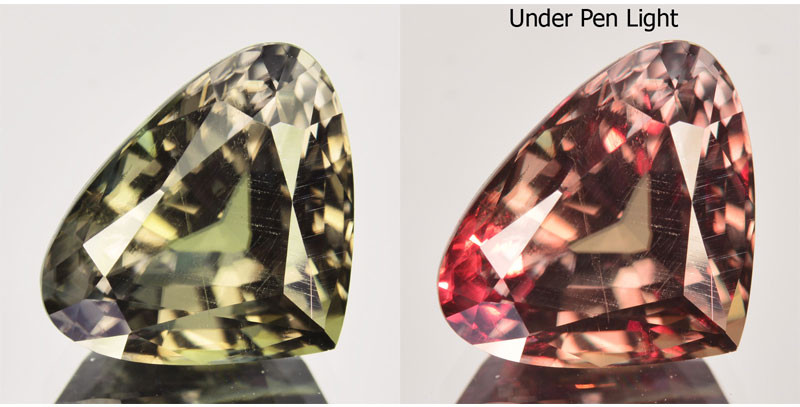
Ɔkwan Bɛn so na Diaspore Sesa Kɔla?
Diaspore kɔla a ɛsakra no nam hann a ɛtwetwe wɔ ahwehwɛ no mu no so.
Kɔla ahorow a wotumi hu no bi ne nyankontɔn no kɔla ahorow, na emu biara gye asorɔkye tenten bi. Mpɛn pii no, aboɔden abo kɔla ne asorɔkye tenten nko ara a ɛnnye — s.e., aboɔden abo bruu twetwe asorɔkye tenten biara nanso asorɔkye tenten bruu no.
Nanso, hann fibea ahorow ma asorɔkye tenten ahorow ba. Sɛ hann no sua wɔ asorɔkye tenten pɔtee bi mu a, nneɛma a ɛnnye saa asorɔkye tenten no (kyerɛ sɛ ɛyɛ saa kɔla no) no hwɛbea soronko wɔ saa kanea no ase.
“Nkrasɛm mfɛnsere” yɛ bere a aboɔden abo ntumi twetwe asorɔkye tenten (kɔla) bi a ɛba fam. Aboɔden abo a ɛsakra kɔla wɔ mfɛnsere pii a wɔde mena. Enti, sɛ hann fibea bi ma asorɔkye a ɛyɛ ahabammono pii ba a, aboɔden abo no te sɛ ahabammono; sɛ hann soronko bi ma asorɔkye kɔkɔɔ pii ba a, aboɔden abo no bɛyɛ kɔkɔɔ.
Momma yennye yɛn ahome mfi kɔla ho nyansahu mu na yɛnhwɛ diaspore honhom fam fã!
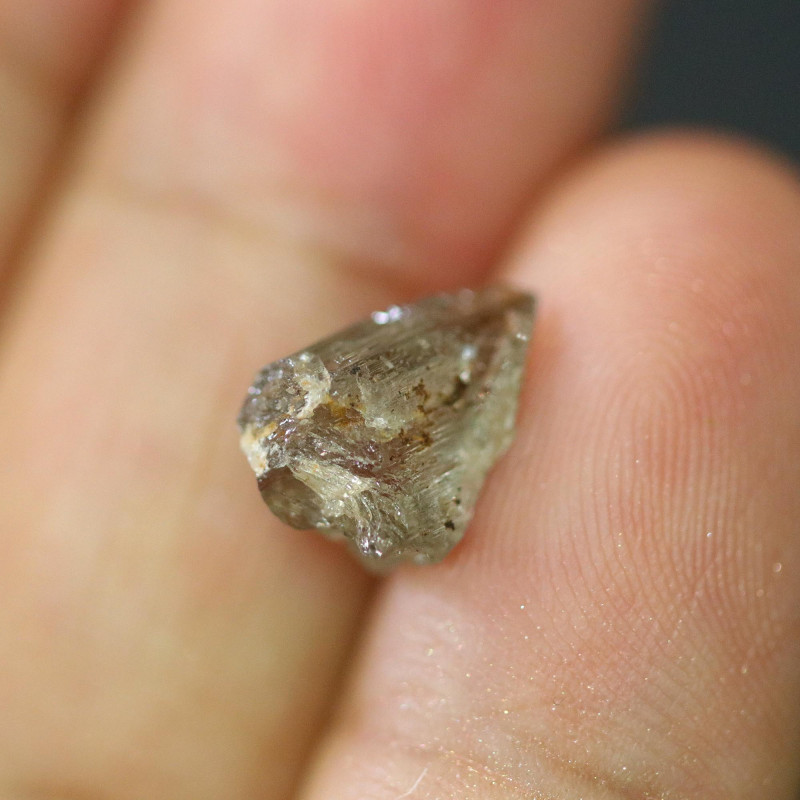
Diaspore Nkyerɛase & Abakɔsɛm
Nea diaspore ɔbo no kyerɛ no mu dodow no ara fi tumi a ɛma ɛsakra kɔla no mu. Ɔbo no yɛ nsakrae ne nsakrae a ɛne asetra mu nkɔanim ne nsu a ɛsen no ho sɛnkyerɛnne.
Wɔ Turkeyfo anansesɛm mu no, tete apuei fam nyansapɛfo kyerɛw ahwehwɛ no ho asɛm, na wɔkyerɛ sɛ na Sultanfo hyɛ diaspore nkaa anaasɛ wɔde maa wɔn yerenom akyɛde.
Atubrafo a aban mpanyimfo huu nea edi kan no sii wɔ 1801 mu wɔ Russia Urals, faako a na ɛhɔfo afrɛ no “glandular kyanite .”
Franseni aboɔden abo ho ɔbenfo, René Just Haüy, na ɔkyerɛw aban nkyerɛkyerɛmu a edi kan na ɔpaw edin diaspore. Enya fi Hela kasa mu diaspeirein a ɛkyerɛ “pete” mu, na ɛda sɛnea ɔhyew ma diaspore sɛe (ɛtetew ne nnyigyei a ɛyɛ krak) adi.
Gem-quality diaspore ankɔ so kosii 1970 mfe no mu bere a Turkeyfo a wotu bauxite huu nhwɛsode kɛse bi a ɛsakra kɔla a ɛwɔ nsakrae a ɛyɛ pinkish-brown kosi bruu-ahabammono no.
Bere a atopae afoforo apue no, diaspore abakɔsɛm a ɛyɛ anigye no mu dodow no ara di Turkeyfo atubrafo ne wɔn a wɔyɛ adwumaden baanu ho: Amerikani a ɔyɛ aboɔden abo a wotwitwa yiye Stephen Kotlowski ne Turkeyni agudeyɛfo Murat Akgun.
Zultanite & Csarite ho asɛm
Akgun ne Kotlowski dii akwampaefo wɔ diaspore aguadi mu, na wofii wɔn adwumakuw Golden Land Trading ase wɔ 1990 mfe no mfinimfini. Wɔ 1995 mu no, Kotlowski nyaa AGTA Spectrum “Cutting Edge” Award esiane sɛ ɔde faceting a ɛte sɛ fan, 26-carat diaspore.
Eduu afe 2005 no, Akgun nyaa hokwan a ɛwɔ mmara kwan so sɛ wotu fagude ne sikasɛm mu mmoa a ɔde bɛtrɛw adwumakuw no mu akɔ Zultanite Gems LLC.
Akgun de aguadi din a ɛhyɛ Ottoman Ahemman no mu Sultanfo anuonyam ho nyansa sɛ wɔmfa mma wɔn aboɔden abo a ɛkorɔn no da nsow na wɔama aguadi anya nkɔso. Wɔkɔɔ anim ne akyi, fi “Ottominite” so kɔɔ “Sultanite” so kosii awiei koraa no “Zultanite.”
Zultanite agye din kɔɔ soro, na ɔmanfo nyaa diaspore aboɔden abo a wɔde di gua wɔ afe 2007. Bɛyɛ afe 2011 no, Kotlowski de n’ani kyerɛɛ Zultanite® a ɛso sen biara wɔ wiase no mu yɛɛ no aboɔden abo kɛse a ne kɛse yɛ carat 96 a wɔato din “Sultan’s Shield.”
Wɔ afe 2012 mu no, Britania agudeyɛfo, Stephen Webster, de Sultan’s Shield no kaa agude a ɛyɛ fɛ ho. Awiei koraa no, wɔtɔn set no gyee dɔla ɔpepem 1.5, na na emu nkyem abiɛsa mu abien yɛ Sultan’s Shield nkutoo de.
Awerɛhosɛm ne sɛ, mmara kwan so drama bere bi dii akyi bae — ɛbaa awiei sɛ Akgun hweree hokwan ahorow a ɔwɔ wɔ adwumakuw no ho, “Zultanite” din, ne diaspore nneɛma a wɔakora so nyinaa. Esiane sɛ na ɛsɛ sɛ Akgun fi ase fi mfiase nti, ɔyɛɛ aguadi din foforo: Csarite. Awiei koraa no, afanu no nyinaa siesiee wɔn ntam akasakasa, na wɔda so ara yɛ asomdwoe.
Sɛ yɛreka bɔne fafiri ne ayaresa ho asɛm a, dɛn na Zultanite® ye ma sɛ ayaresa ɔbo?
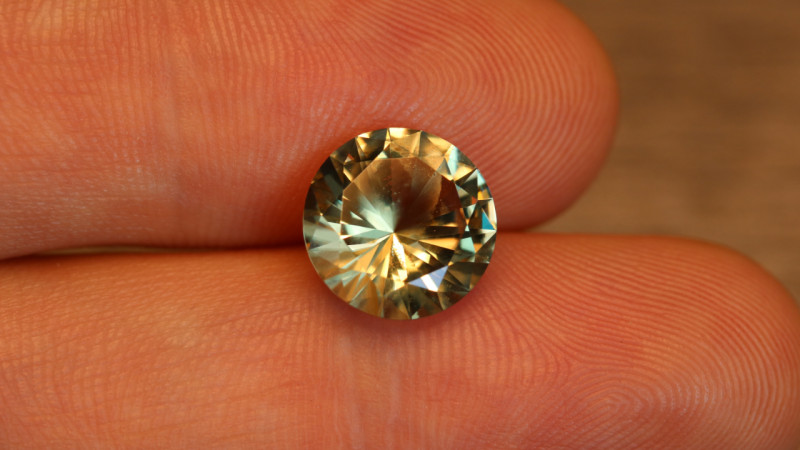
Diaspore Ayaresa Nneɛma
Te sɛ ahwehwɛ nyinaa no, diaspore ahoɔden ne kɔla ahorow ma no tumi titiriw sɛ ɔbo a ɛsa yare . Metaphysical diaspore a wɔde di dwuma pii yɛ nsakrae, sɛ́ ɛyɛ w’adwene a ɛsakra anaasɛ asetra mu nsakrae a ɛba mpofirim a wodi ho dwuma.
Te sɛ aboɔden abo a ɛyɛ pink nyinaa , pink diaspore betumi ahyɛ ne ho dɔ ho nkuran, asa nkate mu akuru, na ama wɔanya awerɛhyem a ɛma ahoɔden.
Dɛn ne diaspore metaphysical su ahorow a ɛma nipadua, nkate, ne chakra ayaresa?
Nipadua mu Ayaresa
Ebia mfaso a ɛwɔ Diaspore so wɔ nipadua mu no bi ne sɛ ɛma obi kae ade yiye na ɛboa ntini ahorow no. Ebia ɛbɛtew adwennwen so denam boa a ɛbɛboa ma mogya mmoroso ne koma bɔ so atew so.
Te sɛ aboɔden abo pii a enni kɔla , diaspore betumi ama w’adwene asi w’adwene so na w’adwene mu ada hɔ, titiriw sɛ wuhu amane wɔ amemene mu sum a efi onyin anaa adwennwen mu ba a.
Nkate mu Ayaresa
Diaspore betumi aboa wo ma woayɛ nsakrae wɔ nkate fam wɔ mfiase foforo ne nsakrae ahorow mu. Ne kɔla a ɛsakra no da tumi a wɔkyerɛ sɛ etumi sesa adwene a enni anidaso mu ma ɛbɛyɛ anidaso a ɛyɛ anigye no adi.
Bio nso, diaspore betumi ama ahoɔden a wɔde gyina ano ne ɔhaw ahorow ano aduru atu mpɔn. Crystal ayaresafo de crystal no di dwuma de kanyan adebɔ na wɔma dae a wɔkae no yɛ kɛse.
Chakra Ayaresa
Chakra abo yɛ nnwinnade a wɔde di dwuma wɔ ahoɔden ayaresa mu de kari pɛ wɔ wo chakras — ahoɔden mmeae a wɔakyekyere wo yiyedi afã horow. Diaspores yɛ chakra abo ma aniwa chakra a ɛto so abiɛsa.
Aniwa chakra a ɛto so abiɛsa no wɔ wo moma so wɔ w’ani ntam na egyina hɔ ma honhom mu nhumu a ɛkorɔn. Sɛ wɔsiw wo kwan a, ebia w’adwene begye wo nkate ho kyim anaasɛ wobɛte nka sɛ w’ani nnye asetra ho.
Sɛ diaspore bue chakra no a, wote ahotoso nka wɔ w’atirimpɔw mu, wunya wo nkate mu ahotoso, na wunya wo ho a wubehu kɛse.

Diaspore Aboɔden abo Nneɛma a Ɛwɔ Hɔ
Aboɔden aboɔ su ne nneɛma a abenfoɔ de di dwuma de bu aboɔden aboɔ boɔ a ɛwɔ botaeɛ mu ho akontaa. Kɔla, nea wɔatwa, nea emu da hɔ, ne carat mu duru di dwuma wɔ diaspore bo a ɛsom no mu.
Ahosuo
Diaspore kɔla dodow no ara fi efĩ a ɛwɔ hɔ bere a ɔbo no reyɛ no mu. Chromium ma ɛyɛ ahabammono, manganese ma ɛyɛ pink ne kɔkɔɔ, na dade ma ɛyɛ ahabammono anaa bruu.
Diaspore a ɛsakra kɔla a eye sen biara no wɔ kɔla ahorow a ɛda nsow a ɛyɛ ma. Ɛbɛsan nso anya nsonsonoe pa, ɛbɛda adi sɛ canary kɔkɔɔ a ɛhyerɛn wɔ owia hann mu kosi raspberry kɔkɔɔ a emu dɔ wɔ kyɛnere hann mu. Nhwɛsode a ɛba fam no bɛda ɛnne ahorow a ɛyɛ mum te sɛ khaki ahabammono, sare kɔkɔɔ, fitaa, ne bruu adi.
Twa
Diaspore a ɛpaapae pɛpɛɛpɛ ne sɛnea ɛyɛ ahwehwɛ no ma faceting yɛ anifere, enti nimdeɛ a wɔhwehwɛ ma abo a ɛwɔ afã pa no ma ne bo yɛ kɛse. Nea ɛka ho no, cut quality nya sɛnea kɔla ne kɔla nsakrae no yɛ papa no so nkɛntɛnso.
Nneɛma a wɔtaa twitwa afã horow ma diaspore no bi ne cushion, rectangular, ne octagon. Chatoyant diaspore a wɔntaa nhu (a ɛwɔ “ɔkraman aniwa”) bɛyɛ cabochon bere nyinaa .

Ɛda adi pefee
Nkonimdi abasobɔde ahorow kyerɛkyerɛ sɛnea nneɛma a wɔde ka ho wɔ aboɔden abo mu no mu. Diaspore yɛ Type II wɔ colored gemstone clarity scale , a ɛkyerɛ sɛ ɛwɔ nneɛma nketenkete a wɔde ka ho a wotumi hu nkutoo ne 10x-magnification.
Abo a wɔde nneɛma a emu yɛ duru a wotumi hu ka ho no bo bɛyɛ nea ɛba fam koraa. Nea ɛka ho nkutoo ne nea ɛka ho a ɛte sɛ nhama a ɛma chatoyancy ba, efisɛ chatoyant diaspore ho yɛ na.
Carat Mu duru
Mpɛn pii no, aboɔden abo akɛse a ɛwɔ diaspore mu no bo yɛ kɛse wɔ carat biara ho. Wobɛhunu kɔla nsakraeɛ pa wɔ aboɔ a ɛboro 2 cts so nko ara. Abo a ɛboro 5 cts na ɛwɔ kɔla nsakrae a eye sen biara, nanso ɛno yɛ bɛyɛ ɔha biara mu nkyem 3 pɛ wɔ diaspores mu.
Diaspores biara a ɛho tew aniwa (a ɛnyɛ nea wɔde ka ho) a ɛboro carat 7 no wɔ ɔha biara mu nkyem 1 a ɛwɔ soro no mu.
Nneɛma a wɔde yɛ nneɛma
Synthetic kɔla-sesa diaspore taa yɛ ahwehwɛ a nnipa ayɛ a ɛyɛ kɔkɔɔ-ahabammono wɔ fluorescent hann mu na brownish-kɔla wɔ incandescent hann mu. Ebia wɔn a wɔyɛ no de neodymium ne praseodymium bedi dwuma de ama kɔla asesa.
Wobɛyɛ dɛn ahu sɛ diaspore yɛ ankasa?
Mpɛn pii no, diaspore a wɔayɛ, anaa atoro bo yɛ nea adwenem naayɛ wom. Bere a ɛkame ayɛ sɛ wontumi nhu nsonsonoe a ɛda abɔde mu abo ntam no, nsu mu hyew a wɔde yɛ diaspore bi bɛkyerɛw “g/t” wɔ ne nkyerɛwde so. Atoro a wɔtaa yɛ a wɔyɛ ne ho sɛ Zultanite® a ɛrenya twetwe wɔ ebay so no te sɛ nea ɛyɛ fitaa, ntakra, ne dade.
Adanse a edi mu biako pɛ a ɛkyerɛ sɛ diaspore yɛ abɔde mu de ne aboɔden abo adansedi krataa .
Ɔkwan bɛn so na abɔde mu diaspore ba?
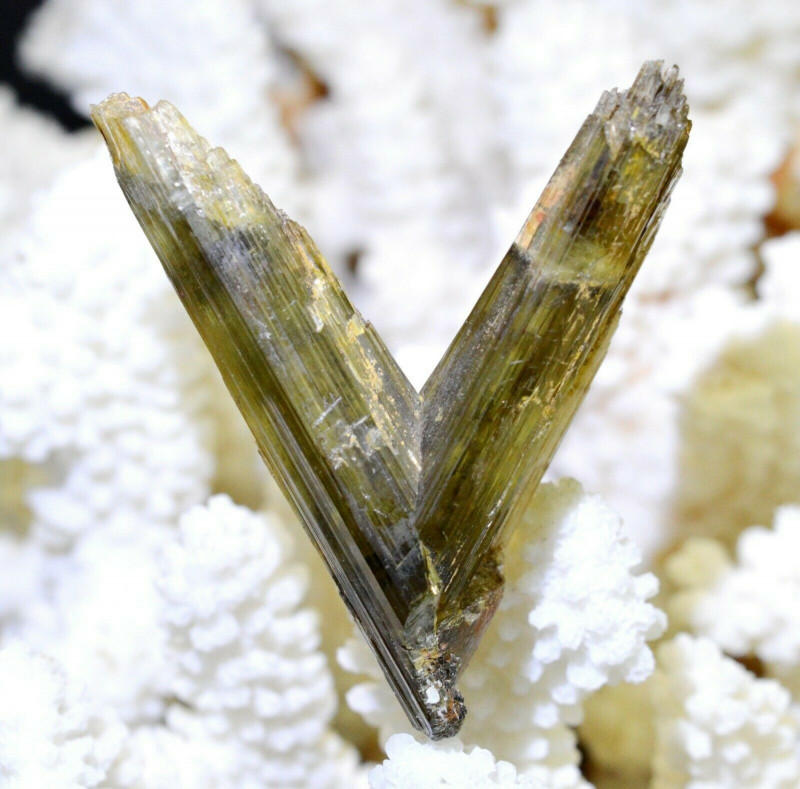
Diaspore Formation & Nneɛma a Wɔde Yɛ Adwuma
Ɔkwan a wɔtaa fa so hyehyɛ diaspore ne diagenesis.
Diagenesis fi ase bere a mmeae a osu tɔ na owia bɔ kɛse no yɛ alumino-silicate abotan, na ɛdan silicate no dɔte no. Dɔte no ne nsu yɛ adwuma, na awiei koraa no ɛbɛyɛ bauxite. Diaspore dodow no ara fi bauxite a wɔde asie mu.
Ɔkwan foforo a wɔfa so hyehyɛ nneɛma ne hydrothermal alteration. Abotan a ɛyɛ aluminous fi ase wɔ asase mu hyew nhyehyɛe ahorow mu, baabi a ɔhyew fi awosu mu fi Asase no so kɔ soro. Nsu a ɛyɛ hyew kɔ abotan a nsu tumi fa mu mu, na ɛsakra abotan no na ɛma abotan foforo te sɛ diaspore ba.
Mmeae a Wɔtu Tuo
Sɛnea wunim no, Turkey ne beae titiriw a wonya aboɔden abo a ɛwɔ diaspore. Afghanistan puei wɔ afe 2020 mu, na ɛyɛɛ pleochroic diaspore a ɛwɔ baby pink kosi lilac hues.
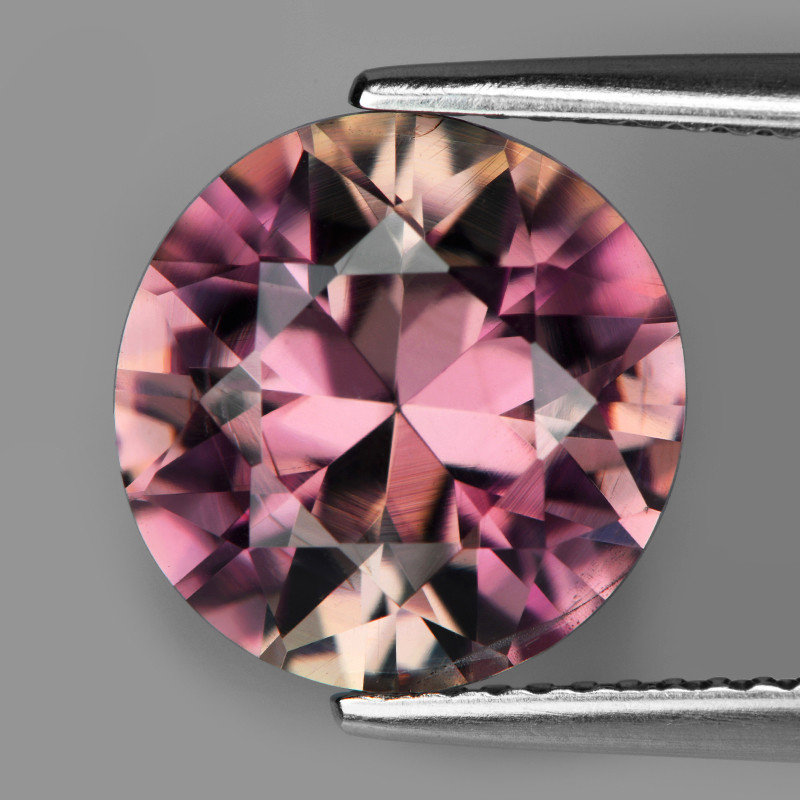 Mfonini: diaspore a ɛyɛ pink a efi Afghanistan
Mfonini: diaspore a ɛyɛ pink a efi Afghanistan
Sɛ Afghanistan ne Turkey da nkyɛn a, ɛhe na wohu diaspore? Yɛbɛbobɔ wɔn din wɔ ase ha:
Argentina
Brazil
China
France
Germany
Greece na ɛwɔ hɔ
Greenland na ɛwɔ hɔ
Hungary na ɛwɔ hɔ
Japan
New Zealand na ɛwɔ hɔ
Norway
Russia
South Africa
Switzerland
Sweden
United Kingdom (England & Scotland) .
U.S.A. (Pennsylvania, Arizona, Massachusetts) .
Ɛyɛ bere a ɛsɛ sɛ yɛka bo ho asɛm. So diaspore bo yɛ den? Aboɔden abo a ɛkorɔn te sɛ Zultanite® anaa Csarite® bo yɛ den, nanso momma yɛnkyekyɛ nneɛma pɔtee no mu.

Diaspore Bo & Ne Bo
Faceted diaspore bo a carat biara yɛ $70-$900 ma abo a ɛsakra kɔla wɔ wholesale. Diaspore aboɔden abo a ɛnsakra kɔla taa yɛ $6-$40 wɔ carat biara mu, ɛwom sɛ Afghanistan diaspores a ɛyɛ pink-purple yɛ $150-$300 wɔ carat biara mu de.
Zultanite® yɛ ahe wɔ carat biara mu? Zultanite® sesa wɔ boɔ-carat biara mu sɛdeɛ carat mu duru teɛ nanso ne nyinaa mu firi $500-$10,000 wɔ carat biara mu wɔ aguadidan mu ne $50-$3,000 wɔ carat biara mu wɔ kɛseɛ mu.
Csarite® bo yɛ ahe? Calibrated Csarite® gems fi $30-$200 wɔ carat biara mu bere a ennu 5 cts. Csarite® a ɛboro 5 cts bo yɛ $500-$1,000 wɔ carat biara mu.
Nneɛma a ne bo yɛ den sen biara ne diaspore cabochons ne rough specimens . Cabochons a ɛsakra kɔla no bo yɛ $2.50-$11 wɔ carat biara mu wɔ nea wɔtɔn no kɛse mu. Diaspore abo bo a wɔbɔ ma rough specimens no taa yɛ $3 wɔ carat biara mu nanso ebetumi ayɛ $2-$20 wɔ carat biara mu.
Diaspore Hwɛ ne Nsiesiei
Aboɔden abo a wɔhwɛ so yiye ho hia na wɔasiw ɔsɛe ano. Agude a ahobammɔ wom sen biara a wubetumi apaw ne pendants ne asomuade, nanso wubetumi akɔ so atɔ diaspore ring — yɛkamfo nhyehyɛe a ɛbɔ wo ho ban kyerɛ ara kwa .
Fa nsu a ɛyɛ hyew ne samina a ɛnyɛ den tew diaspore ho brɛoo. Fa nsu a ɛyɛ hyew hohoro mu na fa ahwɛyiye fa microfiber ntama bɔ so ma ɛnwo.
Ma diaspore ntwe wo ho fi:
Ɔhyew a ɛsakra kɛse
Ɔhyew a ano yɛ den
Ultrasonic ne steam a wɔde tew nneɛma ho
Acid ahorow a wɔde yɛ nneɛma
Nneɛma a wɔde di dwuma ɔkwammɔne so
Yi wo diaspore agude no ansa na woayɛ apɔw-mu-teɛteɛ a emu yɛ den. Fa sie baabi a ɛnyɛ aboɔden abo afoforo.
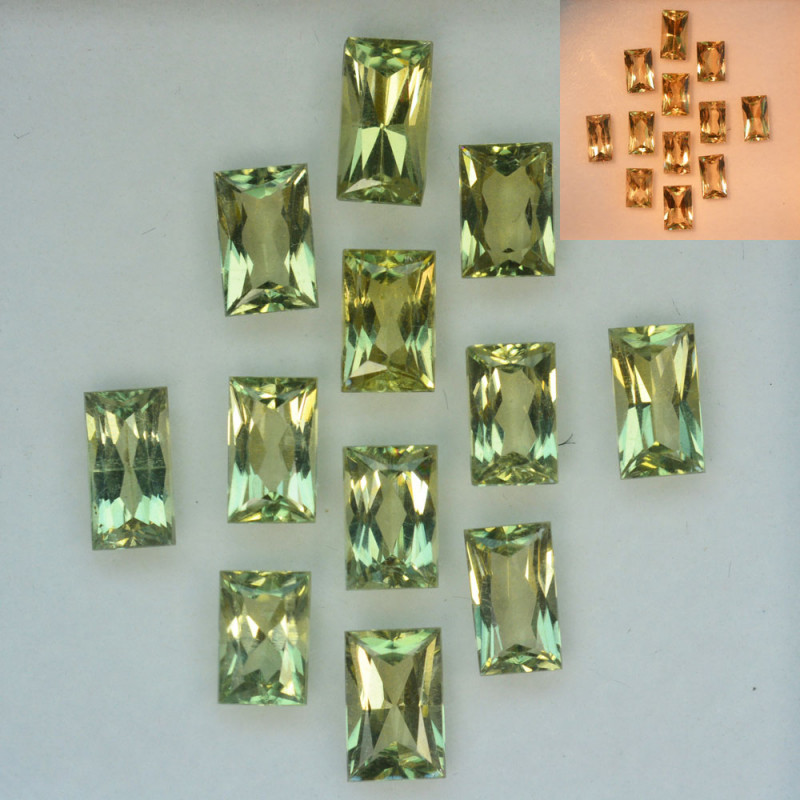
Woasiesie wo ho sɛ Wo ne Diaspore bɛkɔ soro?
Diaspore tumi a ɛyɛ fɛ a ɛsakra kɔla ne nnɛyi abakɔsɛm a ɛyɛ fɛ no ma ɛyɛ anigye soronko ma obiara a ɔpɛ.
Ebia ne bo yɛ den kakra, nanso nea ɛyɛ soronko no kyerɛ sɛ diaspore betumi ayɛ sika kɛse. Sɛ́ ebia wobɛpaw Zultanite®, Csarite®, anaa mpo diaspore a ɛnsakra kɔla no, akyinnye biara nni ho sɛ ne tumi a ɛsakra no benya nkɛntɛnso!
搜尋Gemstone Encyclopedia
相關拍賣
相關文章
Momma yɛnkyerɛkyerɛ sɛnea wɔtɔ aboɔden abo wɔ intanɛt so. Yɛwɔ aboɔden aboɔ a ɛso sen biara wɔ intanɛt so na ɛbɛtumi ayɛ den kakra wɔ mfitiaseɛ no. Ma yɛmfa afotu bi a mfaso wɔ so mmoa wo.
3rd Oct 2018
W’aboɔden abo a wobɛhwɛ so no boa ma ɛyɛ fɛ wɔ wo nkwa nna nyinaa mu. Yɛbɛka nneɛma te sɛ denden ne ayaresa ho asɛm, ne anammɔn a ɛfa sɛnea wobɛhohoro wo aboɔden abo na wode asie dwoodwoo ho.
9th May 2018
So woasusuw sɛnea wɔyɛ Ruby aboɔden abo ho pɛn? Ayaresa ahorow pii wɔ gua so na yɛbɛboa ma yɛakyerɛkyerɛ mu
9th May 2018
最新的文章
Chrysanthemum nhwiren abo yɛ abɔde mu anwonwade a ɛwɔ calcite, celestite, anaa andalusite nhwiren fitaa bi a wɔde asisi limestone tuntum anaa atɛkyɛ abo so.
13th Jan 2026
Rainbow lattice sunstone yɛ feldspar ahorow a ɛwɔ optical nsunsuanso abiɛsa fɛfɛ a efi nneɛma ahorow a wɔde ka ho a ɛwɔ hɔ no mu ba. Ɛyɛ ogya kɔla display ne lattice nsusuwso ma ɛyɛ coletor abohene a wɔntaa nhu!
12th Jan 2026
Thulite yɛ Norwayfo aboɔden abo a wɔntaa nhu a ɛda rosy hue a ɛyɛ hyew a efi zoisite mineral abusua a wɔtaa de di dwuma wɔ agude tebea ne pendants mu adi.
6th Jan 2026
文章類別
How To's is where you will find helpful articles from gem Rock Auctions on how to cut gemstones, select gemstones and buy gemstones.
9文章





